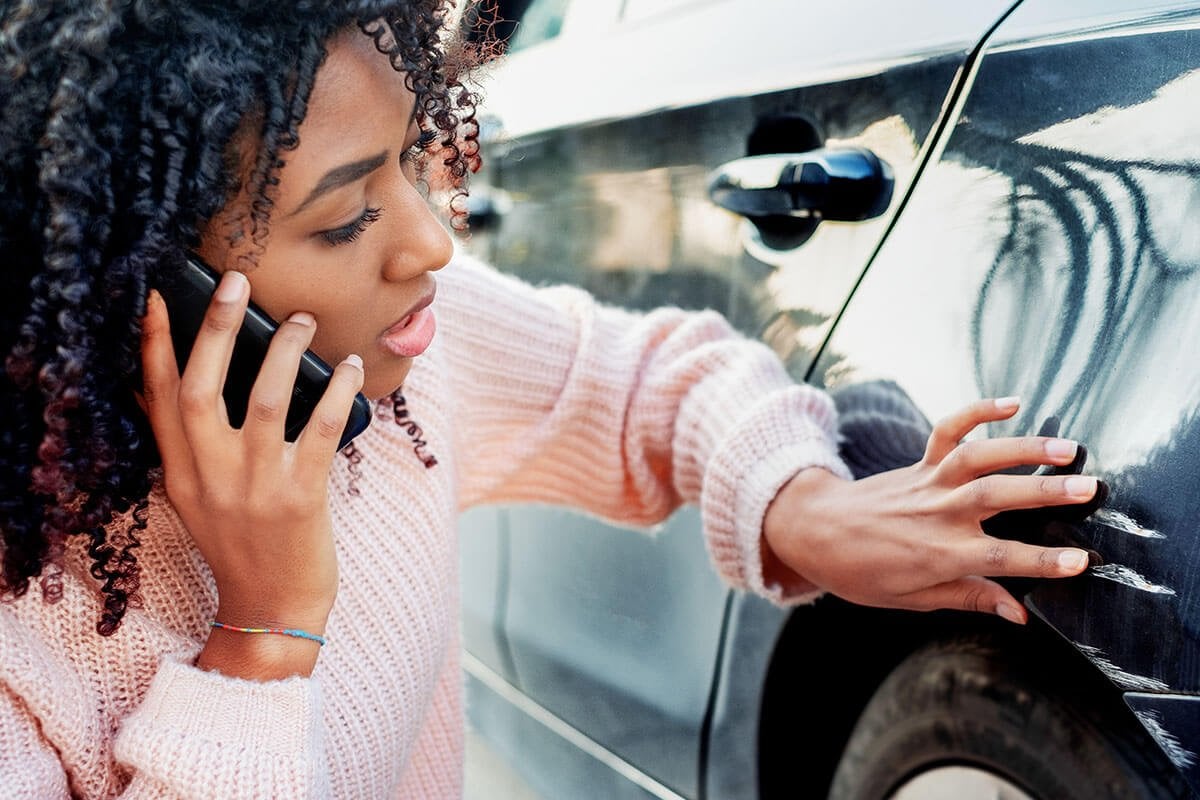What to do in a hit and run
Car accidents are already stressful, and being left by yourself to deal with the situation only increases the frustration. If you’ve found yourself in this circumstance, try to remain calm and follow these steps on what to do in a hit and run.
1. Assess your safety
After being in a hit and run, the first thing to do is check yourself for any injuries and assess your safety. Once you’ve determined you’re not seriously harmed, check on the safety of your passengers.
Keep in mind sometimes shock can cause you to overlook an injury. To avoid overlooking an injury, perform a head-to-toe assessment, checking for any wounds or inhibited movement. For any serious injuries, it’s best to call 911 before attempting to move an injured person so the dispatcher can guide you on what to do until the police and ambulance arrive.
Next, determine if you can safely drive your vehicle out of the flow of traffic. If you cannot move your vehicle, get out and move to a safe place away from oncoming cars. Check your surroundings first to make sure it is safe to do so.
After you’ve gotten yourself and your passengers to safety, check the site for any other individuals involved that remain at the scene for injuries.
2. Call emergency services
If you haven’t done so already, now is the time to call 911 to report a hit and run.
Don’t wait hours to report the collision to law enforcement. Even if no one is injured, you still need to record it for law and insurance purposes. Ask the officer for a copy of the report, as your insurance may request documentation.
3. Compile information
While waiting for law enforcement to arrive, document everything you remember about the other driver and their car. Some things to make a note of:
- A description of the other vehicle, including the license plate number, make, model, color, damage, any distinctive features and the direction they headed
- A description of the other driver, including their sex, race, hair length and color, and any distinguishing features or attire
- The time, location and cause of the accident
- Photos of the damage to your vehicle (look to see if the other vehicle’s paint is on yours and take a photo if so)
- Photos of the scene
If there were any witnesses, ask them if they remember any details you might have missed. For witnesses who can contribute to a police report, be sure to collect their contact info should the police need to follow up later.
4. Inform your insurance provider
Next, contact your insurance provider to file a claim. Each insurer is different. Some require claims to be filed within 24 hours, whereas others might give you 30 days to do it. Either way, it’s best to get the process started as soon as possible so your memory is fresh.
At this point, you might be ready for a tow. Your insurer can also help you get in contact with roadside assistance.
Once you’ve filed the claim, your insurance provider will do the behind-the-scenes work to determine your coverage. We’ll cover more on how insurance handles hit and runs below.
5. Don’t leave the scene of the accident
If you've been in a hit and run with another driver, don't drive away from the scene. Do not follow the other driver in anger, putting you in a dangerous situation. Even if you’ve been in a single-car accident, you should also stay put until law enforcement arrives.
It can be tempting to go home to cool down if you’re uninjured and your vehicle is still intact. However, leaving the scene of an accident is a crime, so it’s important to remain at the scene until law enforcement says otherwise. Depending on the severity of injuries sustained, leaving the collision site can be charged as a misdemeanor or felony.
The one time it may be acceptable to leave the scene is if the accident occurred in a poor cell phone reception area. In most states, you can leave to call in the accident, but after, you must return to the site and wait for the police.





